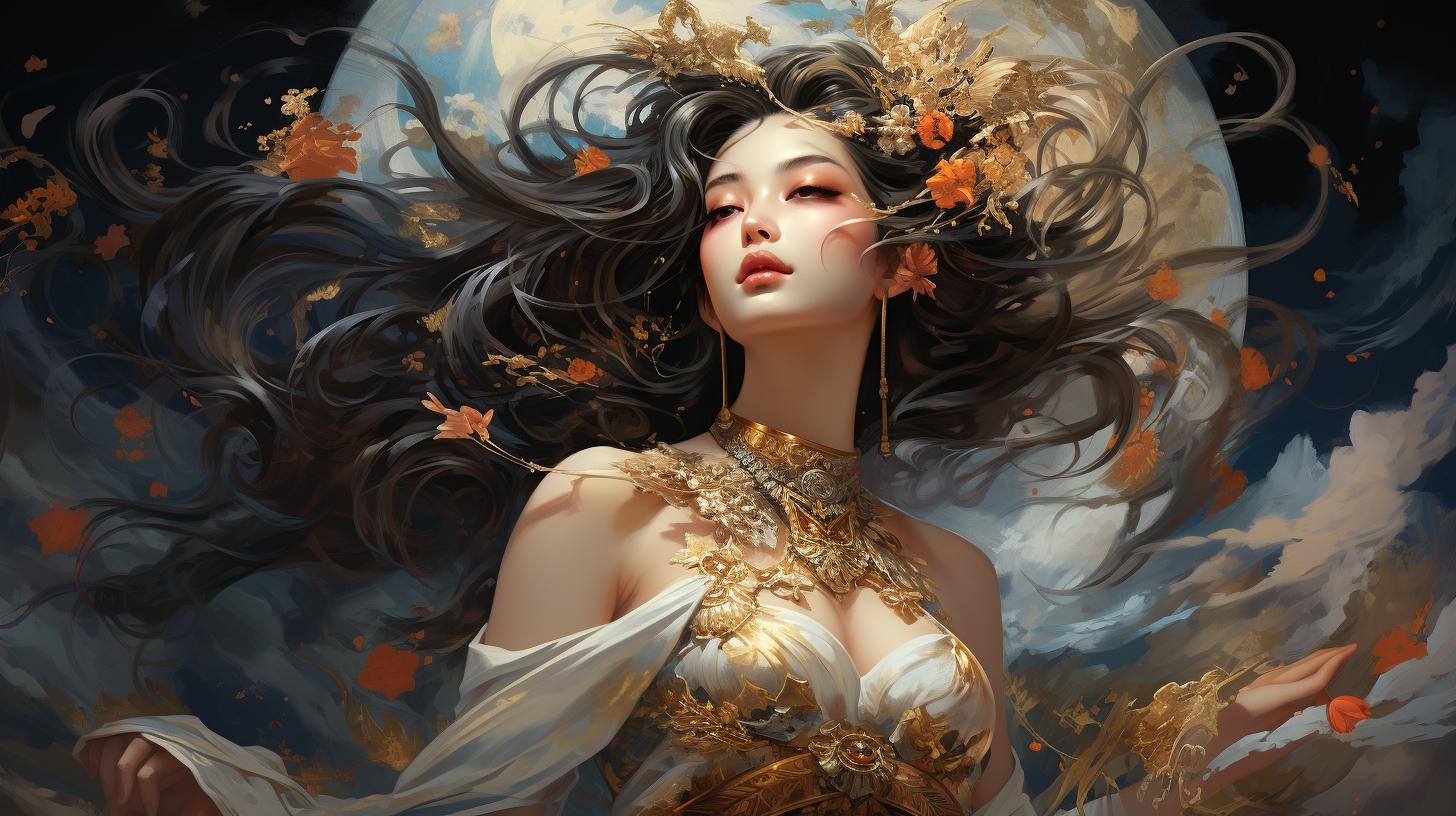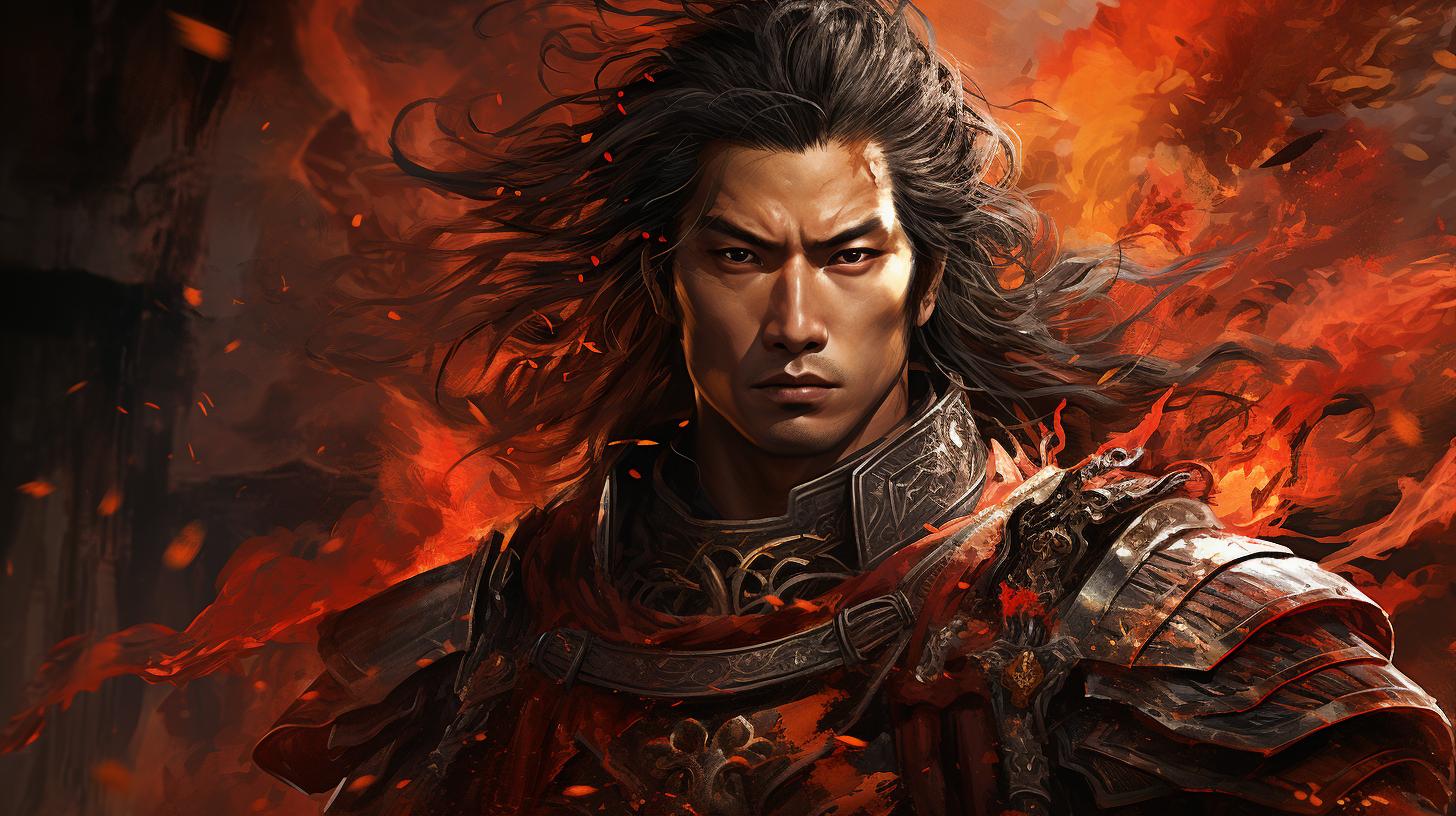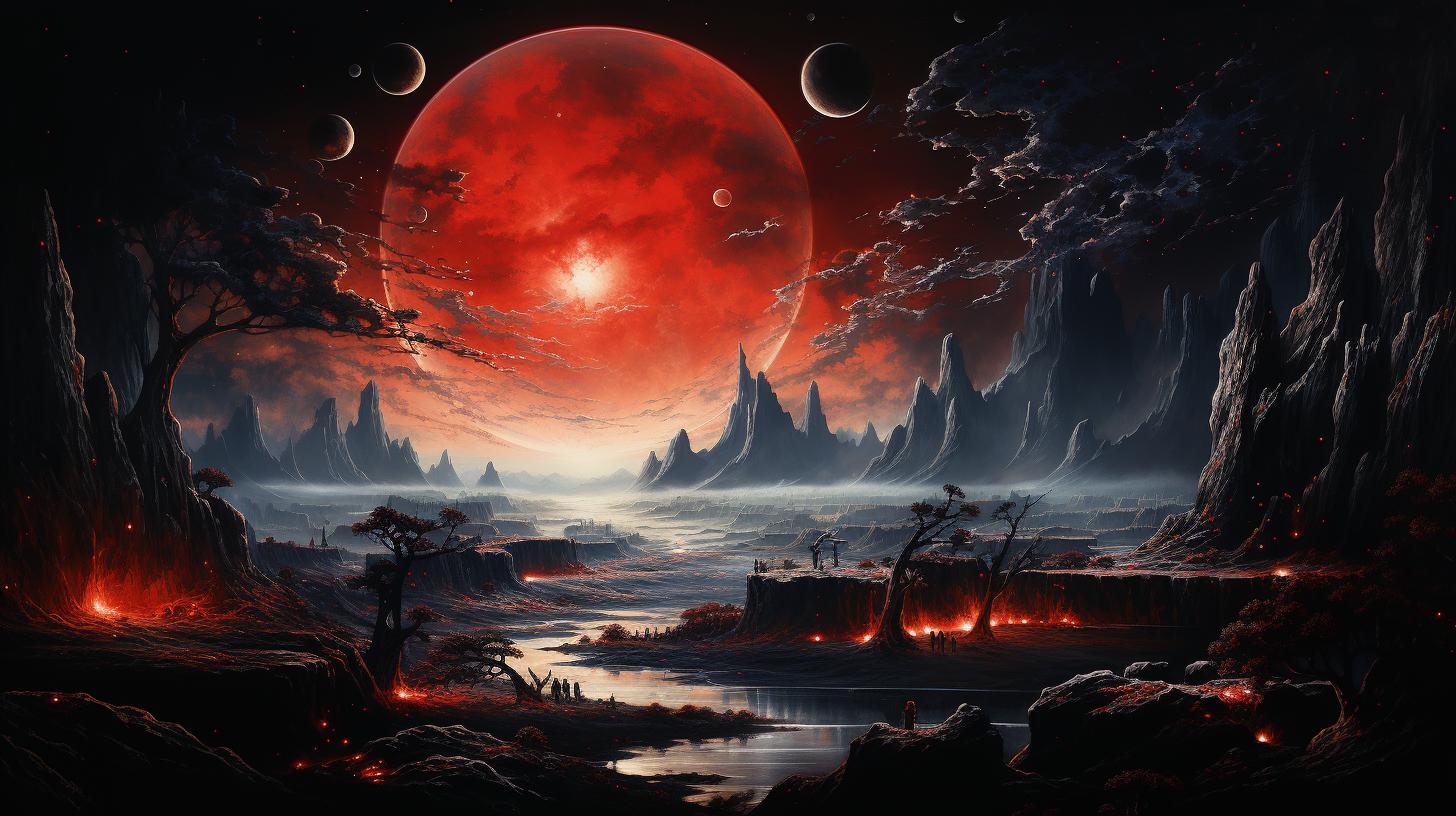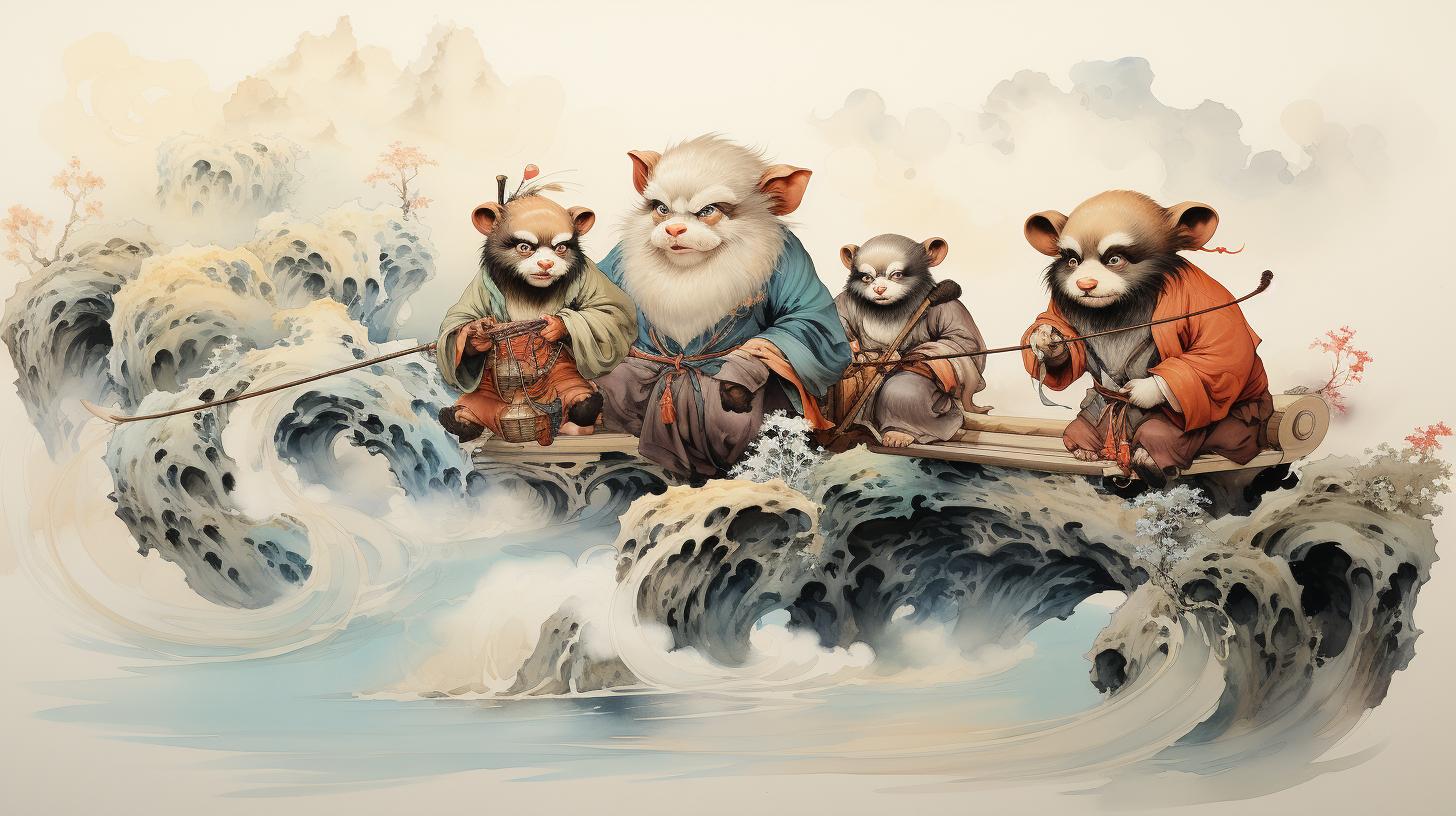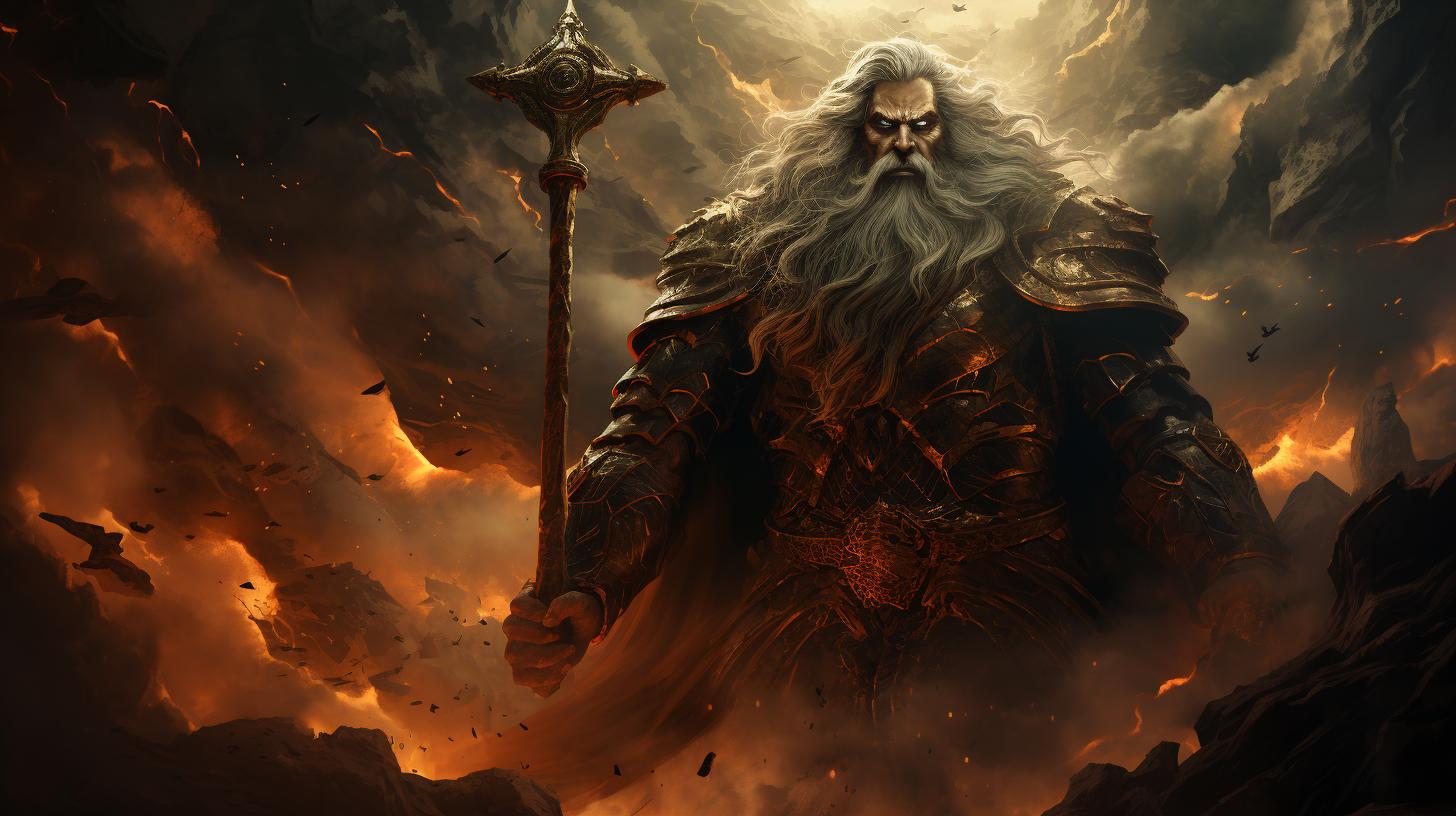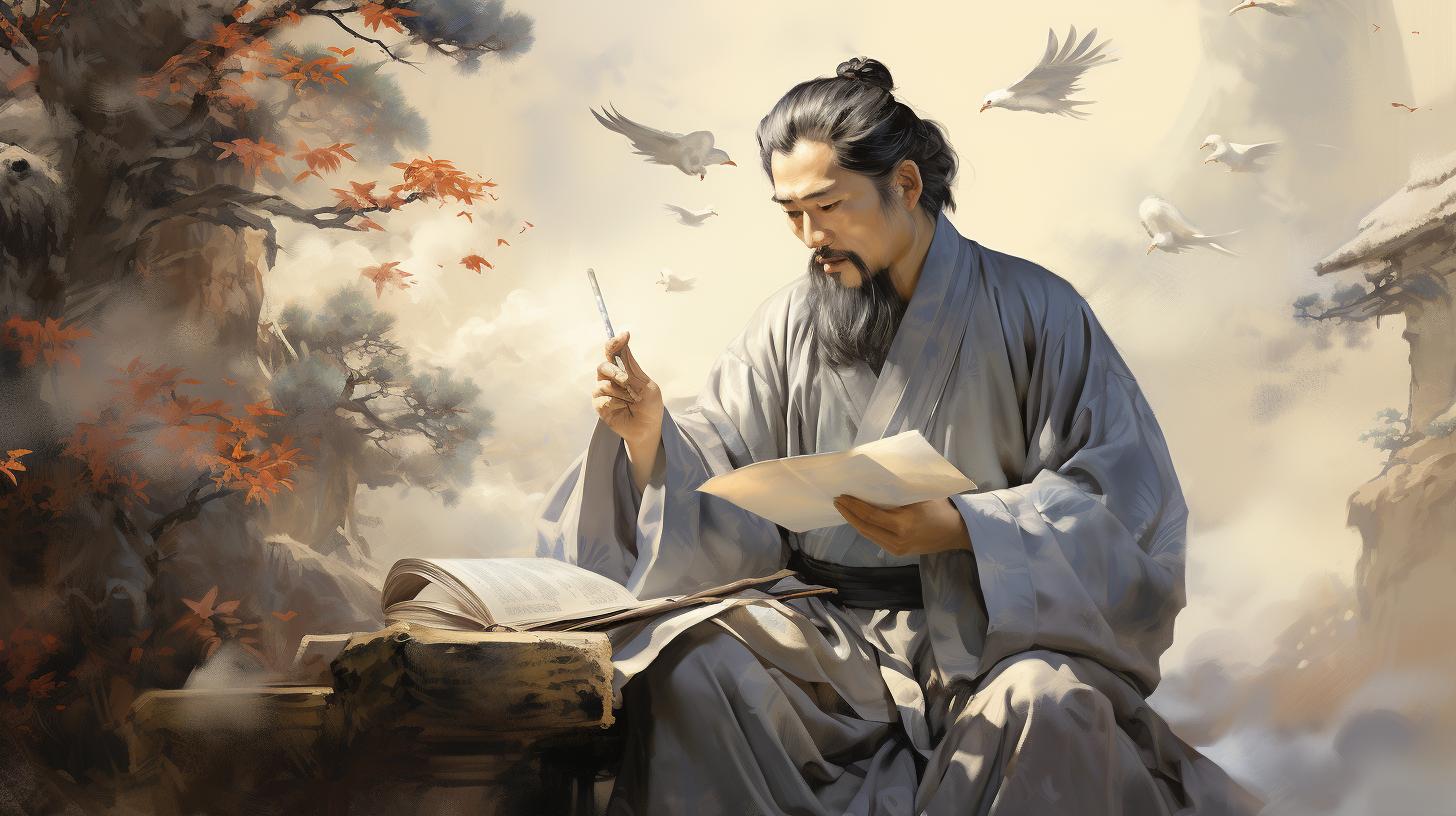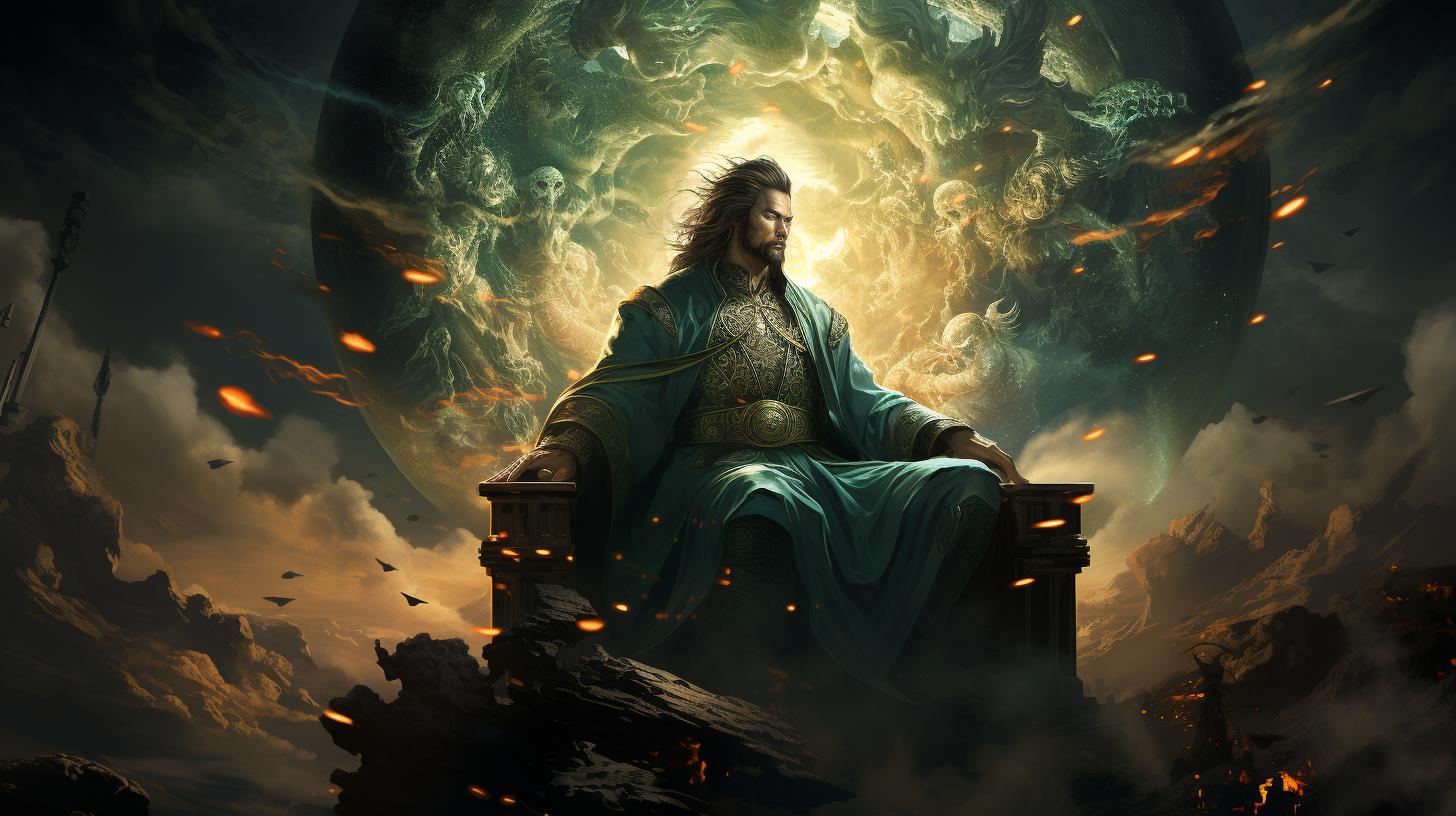Celebrating the Mythical Changxi Goddess: Unveiling the Lunar Legend
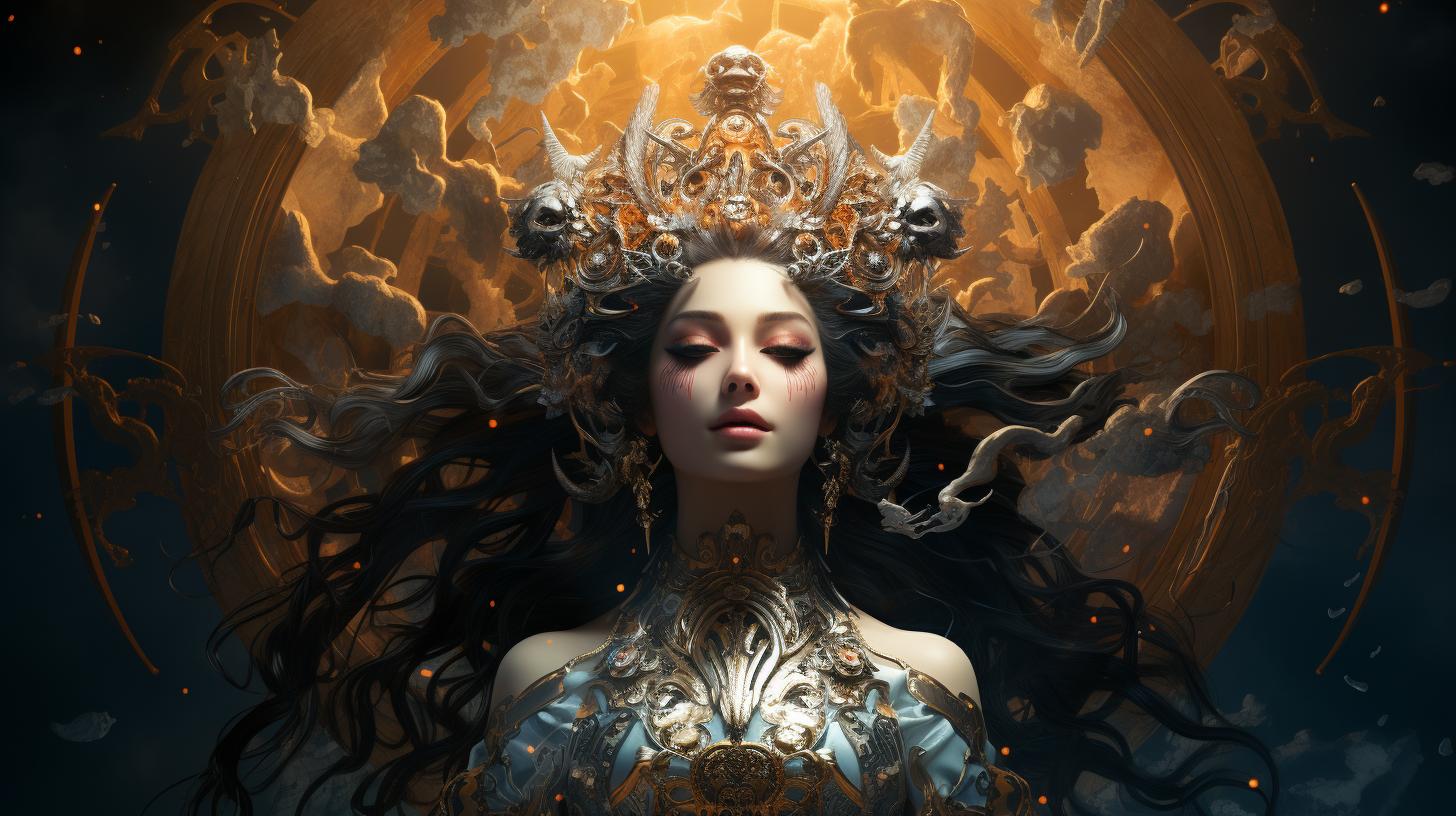
The Changxi Goddess, a prominent figure in Chinese mythology, holds the title of the lunar deity. Often confused with Chang’e, she is Di Jun’s second wife and the mother of the twelve lunar months, including Earth’s Moon.
This article explores the origins, legends, and comparisons between Changxi and Chang’e. Delving into the significance of the lunar months in Chinese culture, it also examines the journey of Changxi through ancient texts like Shan Hai Jing to modern literature and art.
Additionally, it explores the connection between Changxi and Hou Yi, the Excellent Archer, and their association with the lunar sapo. Additionally, references to Changxi in popular culture and her symbolism in contemporary contexts are discussed.
The Changxi Goddess in Chinese Mythology
The Changxi Goddess holds a significant place in Chinese mythology, captivating the imagination with her lunar connections and intriguing legends. Exploring the origins and legends of Changxi (also known as Hengnge or Henge), we uncover the enchanting tales that have been passed down through generations.
Origins and Legends of Changxi
Changxi’s mythology originates from ancient texts such as the ‘Shan Hai Jing’ or ‘The Classic of Mountains and Seas.’ According to these texts, Changxi was the second wife of Di Jun and the mother of the twelve lunar months, including the Earth’s Moon.
Legends tell of her stealing and devouring a herb of immortality from her husband, Hou Yi, also known as the Excellent Archer. As a result, she found protection under the moon, becoming the lunar goddess we know today.
Changxi and Chang’e: Similarities and Differences
It’s important to note that Changxi is often confused with another lunar goddess named Chang’e. However, while their stories share similarities, they are distinct entities in Chinese mythology. Changxi is believed to be an evolution or variation of the ancient lunar goddess archetype, with both goddesses embodying the lunar realm’s mythical aspects.
Understanding the connections and differences between Changxi and Chang’e provides a deeper appreciation for the complexity of Chinese lunar mythology.
The Lunar Connection: Changxi and the Twelve Lunar Months
According to ancient Chinese mythology, Di Jun and Changxi are blessed with twelve children, each representing a lunar month. These lunar months are intricately linked to the Earth’s Moon and its phases, symbolizing the ever-changing nature of time and cycles.
Each of the twelve lunar months has its distinct characteristics and symbolism in Chinese culture. For example, the first lunar month is associated with the Spring Festival, also known as Chinese New Year, marking the beginning of the annual lunar calendar.
The lunar months serve as a guiding framework for various cultural festivals and celebrations throughout the year. From the colorful Lantern Festival in the first lunar month to the joyful Mid-Autumn Festival in the eighth lunar month, these occasions provide opportunities for families and communities to come together, honor traditions, and celebrate the interconnectedness of the lunar cycles.
Significance of the Lunar Months in Chinese Culture
The lunar months hold deep cultural significance in Chinese society, influencing various aspects of life such as agriculture, astrology, and traditional medicine. Farmers rely on lunar month predictions to determine the best time for sowing seeds, cultivating crops, and harvesting.
Astrologers use the lunar calendar to interpret the influence of celestial bodies on individual destinies and compatible zodiac signs.
Beyond practical applications, the lunar months also inspire artistic and literary creations, including poetry, paintings, and music. The ever-changing phases of the Moon offer a rich source of inspiration, representing themes of beauty, balance, and transformation.
In addition, the lunar months serve as a reminder of the harmonious relationship between nature and humanity in Chinese culture. They emphasize the cyclical nature of life, where new beginnings and endings coexist, and the interconnectedness of all living beings.
- The lunar months are deeply ingrained in Chinese traditions and continue to shape the cultural fabric of the nation.
- The twelve lunar months connect people to their historical roots, preserving ancient wisdom and customs.
- Moreover, the lunar calendar serves as a unifying force, fostering a sense of unity and community spirit among the Chinese population.
Overall, the concept of lunar months and their association with Changxi highlights the profound cultural significance of the Moon in Chinese society, serving as a constant reminder of the cyclical nature of life, the importance of traditions, and the interconnectedness of all things.
Changxi’s Journey: From Shan Hai Jing to Modern Interpretations
Shan Hai Jing: A Significant Text in Chinese Mythology
Within its pages, the presence of Changxi Goddess emerges, granting us a glimpse into her ancient origins.
Her portrayal in this ancient text establishes her as a central figure in Chinese lunar mythology.
Modern Interpretations of Changxi: Literature and Art
In the realm of modern literature and art, Changxi Goddess continues to inspire and captivate audiences. Authors and artists have found ways to breathe new life into her story, exploring her character in different contexts and interpretations.
Various works of fiction, ranging from short stories to novels, have transported Changxi into contemporary settings, unraveling her timeless allure.
Moreover, artists have been entranced by the enigmatic beauty of Changxi, often capturing her essence through stunning visual representations. Paintings, illustrations, and sculptures bring her mythical presence to life, allowing viewers to connect with her divine energy and immerse themselves in her lunar realm.
Through these modern interpretations, Changxi Goddess transcends the boundaries of time, proving that her legend continues to resonate and inspire the artistic imagination of today.
The Legend of Hou Yi and the Protection of Changxi
In Chinese mythology, Hou Yi, also known as the Excellent Archer, emerges as a heroic figure of great importance. He is famous for his remarkable skills as an archer, particularly for shooting down nine out of the ten suns that used to traverse the sky consecutively each day.
This feat earned him admiration and reverence among the people.
Hou Yi, the Excellent Arquero: A Heroic Figure in Chinese Mythology
Yi’s legend is intertwined with that of Changxi, the lunar goddess. According to the myth, Yi’s wife Changxi steals and consumes an immortal herb belonging to Yi. As a result, Changxi becomes protected and sheltered by the moon, assuming the role of the lunar deity.
This event not only explains Changxi’s association with the moon but also highlights Yi’s strength and significance as a mythical hero.
Yi’s character represents bravery, skill, and unwavering determination. The legend of his extraordinary archery skills and his role in protecting Changxi showcases his heroic attributes and embodies the values esteemed by Chinese culture.
Changxi’s Connection to Yi and the Lunar Sapo
Changxi’s relationship with Hou Yi extends beyond the theft of the immortal herb. Legends tell us that Changxi and Yi are married, reinforcing their deep connection. Furthermore, Changxi’s protection by the moon is symbolically associated with lunar energy, which is believed to possess mystical powers in Chinese mythology.
Additionally, Changxi’s connection to the lunar sapo further emphasizes her mythical significance. The lunar sapo, known for its association with the moon, is believed to have protected Changxi during her transformation into the lunar deity.
This symbolic motif of protection highlights the inseparable bond between Changxi, Hou Yi, and the lunar realm.
Overall, the legend of Yi and the protection of Changxi showcases the heroic nature of Yi and the transformative journey of Changxi into the lunar goddess. Their intertwined story exemplifies the rich mythology and symbolism deeply rooted in Chinese culture and serves as a reminder of the enduring power of these mythical figures.
Changxi Goddess in Popular Culture
In popular culture, the mythical figure of Changxi Goddess has permeated various forms of art and literature, leaving a significant impact on contemporary society. This section explores the references to Changxi in literature and art, as well as the symbolism associated with her in modern contexts.
References to Changxi in Literature and Art
Changxi Goddess has been a source of inspiration in literature and art, with numerous references made to her in various works. Some notable examples include:
- Literature: Several authors have depicted Changxi in their stories, exploring her divine nature and her role as a lunar deity.
These literary works often capture the essence of her legends and the influence she holds over the lunar months.
- Art: Artists have embraced Changxi as a subject in their creations, capturing her ethereal beauty and the enchanting aura surrounding her.
Paintings, sculptures, and other visual art forms have depicted Changxi in different artistic styles, showcasing her significance in Chinese mythology.
The Symbolism of Changxi Goddess in Contemporary Contexts
The symbolism associated with Changxi Goddess extends beyond ancient mythological beliefs, taking on new meanings in contemporary contexts. Here are some key aspects of the symbolism:
Lunar Femininity:
Changxi embodies the concept of lunar femininity, symbolizing the mysterious and ever-changing nature of the moon. She represents the balance between strength and grace, and her portrayal in modern culture often celebrates the divine feminine energy.
Connection to Nature:
Changxi’s association with the lunar cycles highlights the interconnectedness between nature and human life. She serves as a reminder of the cyclical nature of existence and the importance of harmony with the natural world.
Spiritual Transformation:
The story of Changxi stealing and consuming the immortal herb from her husband Hou Yi represents a quest for spiritual growth and transcendence. In contemporary contexts, Changxi embodies the idea of self-discovery and personal transformation.
Through literature, art, and symbolism, Changxi Goddess continues to captivate and inspire individuals, connecting them to a rich mythological heritage while offering insights into timeless themes and universal human experiences.
.
…

